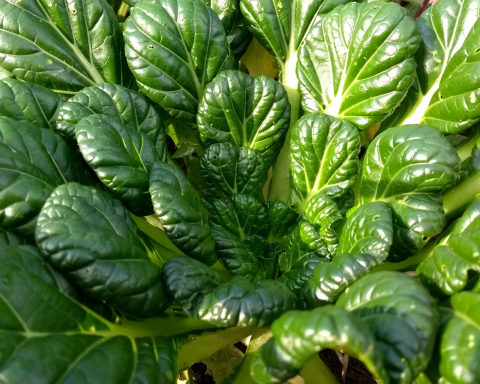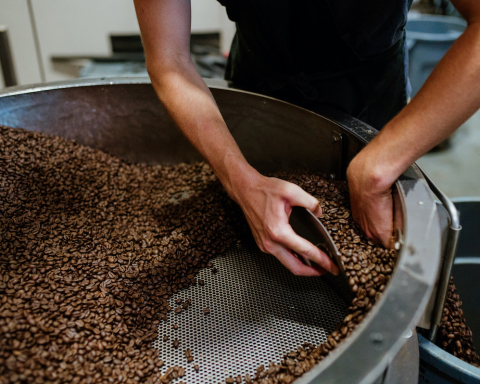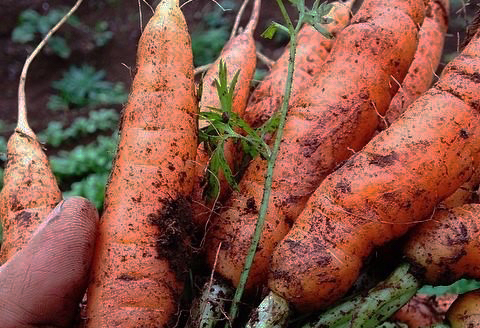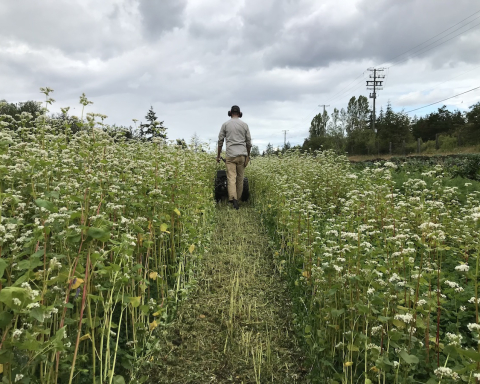Jordy Kersey
The Alaksen National Wildlife Area (Alaksen) is a protected wildlife area in Delta, BC that utilizes agricultural production to provide habitat for migratory birds and other protected species. The area is unique in that the farmland is used to produce forage and habitat for the migratory waterfowl as well as cash crops (annual vegetables).
Maintaining economic and agronomic viability alongside wildlife and habitat conservation is increasingly challenging due to climate crisis pressures, high-water tables, and soil degradation. Due to recent mandates, Alaksen farmers are now required to eliminate farming practices that adversely impact the environment and breadth of species that inhabit the wildlife area. Alternatively, they are moving towards utilization of organic-regenerative methods that are less deleterious and impactful. There is a need to determine how organic-regenerative management methods can effectively be implemented on these farms to sustain production, but also reduce degradation of habitat into the future.
Over the last four farming seasons, agricultural scientists from the Sustainable Agricultural Landscapes Lab at the University of British Columbia (UBC) and the Institute for Sustainable Food Systems at Kwantlen Polytechnic University (KPU) have evaluated conditions and challenges impacting crop production at Alaksen, as well as the crop rotation scheme that is currently used. A range of plot-level studies have been conducted to assess the feasibility of an organic-regenerative farming method and to better understand the interactions between farm activities and wildlife habitat provision.

Following a baseline assessment, a suite of projects to bridge the gap between meeting production goals and maintaining conservation of wildlife habitat and waterfowl populations have been conducted using organic-regenerative approaches. These projects include (but are not limited to): evaluation of organic insect and weed pest management alternatives; development and evaluation of alternative tillage and organic amendment regimes; investigation of some alternative crops and their market potential; and an evaluation of alternative cover cropping approaches. This project is set to continue into the next five years, with research directed at specific organic-regenerative farming methods that have been observed to be promising in this environment and ultimately to investigate a whole farming system that employs organic-regenerative farming practices.
These organic-regenerative methods have potential to not only reduce the environmental harm of the farming system, but also promote soil health and support successful vegetable crop production. Organic-regenerative management may help to increase soil organic matter which can improve soil aggregate stability, and in turn improve soil water dynamics. Increased soil organic matter is also associated with building of soil health and is an indicator of soil fertility. Reducing the synthetic inputs to the system may help to reduce residual pesticides and herbicides within the soil profile and those lost to surrounding water ways. Migratory waterfowl depend on these fields as habitat and farmers depend on these fields for income, so replacing synthetic inputs with organic alternatives and cultivating a healthy soil to effectively support crop disease, weed suppression, and avoid soil degradation is imperative for both wildlife conservation goals and sustained production.

In contrast to many of the potential benefits of transitioning to certain organic-regenerative practices, there are also concerns that may constrain adoption in some areas, including providing adequate crop nitrogen through organic amendments, avoiding an excess or deficit of phosphorus, retaining comparable crop yields, and effective replacement of herbicides with increased tillage intensity.
Application of organic amendments compared to the typical synthetic NPK applied at Alaksen did not significantly reduce growing season plant-available nitrogen nor did it reduce onion and cabbage crop yield over the two years this experiment was conducted. We did, however, find differences in weed pressure with varying tillage intensity. Plots with application of conventional herbicide had significantly less weed pressure and required less labor than plots with no herbicide application. However, increasing tillage intensity also reduced weed pressure, indicating that greater tillage intensity (more passes) may be an effective replacement for weed suppression in these systems. This was particularly apparent in alternative crops such as butternut squash, with the plant structure shading out most weeds by the middle of the growing season. Further research must be conducted to determine how an increase in weed pressure with the elimination of herbicide would impact farm labour costs and how strongly the weed pressure impacts crop yields of other rotation phases.

In addition to alternative farming practices, changes in crop and cultivar selections at Alaksen may reduce growing season constraints, leading to reduced reliance on conventional pesticides and improved cover crop establishment. Adequate cover crop establishment is required to provide sufficient forage for migratory waterfowl over-winter; however, climactic variability in shoulder-season rainfall can cause significant issues for germination and canopy coverage. Transitioning to vegetable crops with shorter periods of maturation could provide farmers with additional days or weeks to get cover crops planted and well-established before shoulder-season rainfall sets in. Crop diversification offers additional potential for improved farm profitability and risk mitigation. Historically, farmers on Westham Island integrated crops such as peas and beans into their cropping systems, but as bird pressures have increased these regimes have often been abandoned. Identifying crops or cultivars that perform well in organic production systems, are disease resistant, and suitable to the unique environment at Alaksen is very important moving forward and in transitioning to a more sustainable cropping regime.
Alternative crops were observed to grow successfully at Alaksen compared to typical rotation crops, such as cabbage, throughout this experiment. Butternut squash, onions, and radishes were three crops that did well throughout the 2021 and 2022 growing seasons. Butternut squash yield was high but the growing season long, as the crop was ready for harvest in early October. While in that year the shoulder-season was dry, in wetter years this may cause problems with harvesting and getting cover crops planted, if rains were to set in during September. On the other hand, radishes were mature and harvested in early July. This would provide ample time for sowing and establishing winter cover crops; however, also poses the issue of barren soil for a portion of the year, until sufficient water is available for cover crop germination. Further research into the marketability of these alternative crops is still needed. The success of alternative cover cropping mixtures to withstand migratory bird grazing pressure is currently being assessed from the data collected over the past two winter seasons.
Moving into the next phase of this experiment we hope to identify combinations of organic-regenerative farming methods that synergize well in this environment for the most beneficial outcomes both in terms of production and wildlife conservation. Farm management at a plot-scale is often very different than field-scale so it is important to
recognize the need for scaling before conclusions can be made. There is also a need to investigate alternative rotation regimes and the economics of organic verses conventional production to contextualize the outcomes of this research within the Alaksen farming system. We are hopeful this research has and will continue to be insightful and provide alternative farming system management to Alaksen farmers and other interested growers in the lower Fraser Valley region.
Jordy Kersey (MSc) is a current PhD candidate in soil science working with Dr. Sean Smukler at UBC in the Sustainable Agricultural Landscapes Lab. Jordy’s research is focused on the impact of regenerative agricultural practices on climate breakdown mitigation and adaptation in the lower Fraser Valley, British Columbia. Specifically, Jordy is investigating how agricultural management practices influence soil carbon and nitrogen cycling, greenhouse gas emissions, and soil water regulation. Jordy is passionate about working towards a more sustainable future and finding meaningful ways to improve agricultural systems to combat climate crisis while continuing to feed our world. Beyond academics, Jordy is an avid cookie baker, traveler, and enjoy long hikes through the forests of the Pacific Northwest.
Featured image: Research plots at Alaksen National Wildlife Area. Credit: Jordy Kersey.










